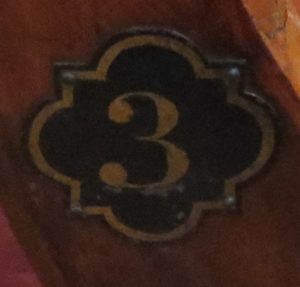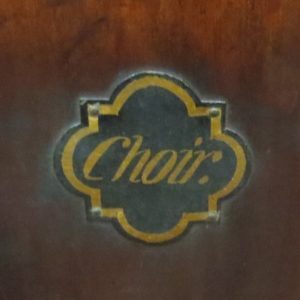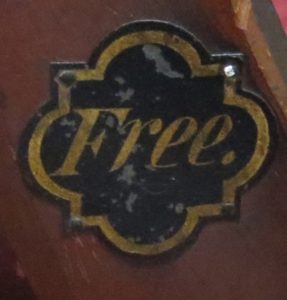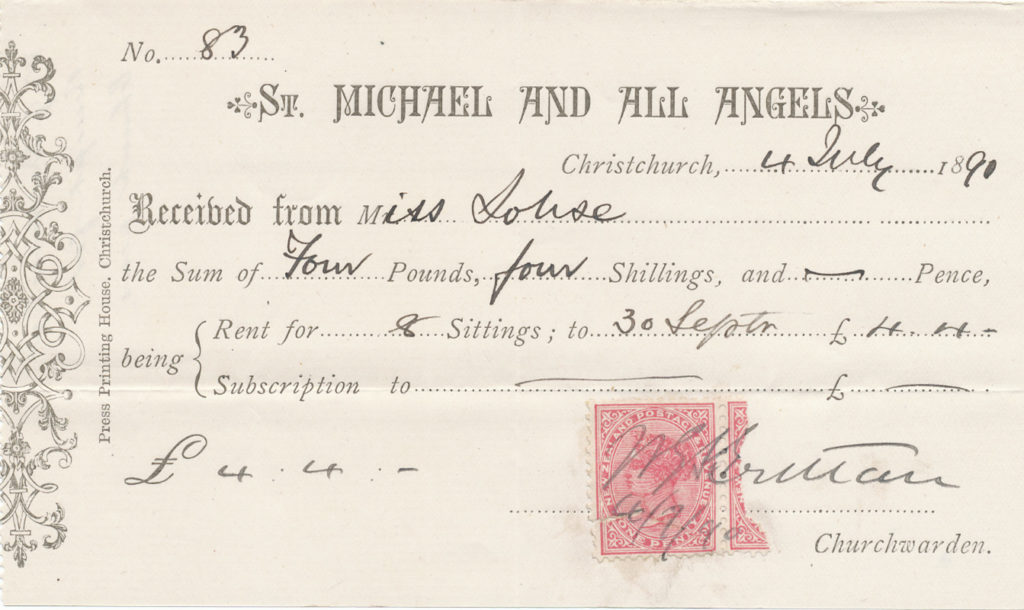If you are a regular worshipper, you will notice that most people sit in the same seat week after week. Some like the front seats because they can see and hear everything clearly. Others like the left- or right-hand side for no apparent reason, it just feels right for them. Some people like to sit next to the same person, because that’s when they have their weekly catch up. Sometimes families with children sit at the back close to the area that has the soft carpet, toys, and crayons.
In the past, in some churches these locations were recorded in sittings books, or pew rent books. By paying a sum of money it was possible to make sure that you sat in the same seat week after week. It is popular misconception that it was rich and upper middle class who reserved their seats in English Churches, but recent research has shown that it was actually the middle and lower middle class who paid rent. Many churches also provided free seats for parishioners who were poor.
So how does this relate to New Zealand? It is not known how many parishes in this Diocese had pew rents, but the Diocesan Archives has this information for the Parishes of Hokitika, Lyttelton and Christchurch- St Michael.
Because the Church of St Michael and All Angels still has the pew numbers on the edge of the pews I decided to investigate jut who was sitting in a sample. Unfortunately, the books are undated but
Miss Parkerson and Mrs Hunt occupied Pew Number 3, while Pew 35 had a variety of inhabitants over time. William McClea had seats 1-4, Richard James Strachan Harman had seats 4-6, H Brinkman occupied seats 3 & 4 at one time, and W J Roberts seats 5 & 6.
 |
 |
| There were 12 pews set aside for the choir. | and a large number were free |
 |
 |
How much was the rent? There is evidence in the Johanna Lohse papers. A receipt records that in 1891 she paid £4.4.0 for eight sittings. This means that a seat cost 12/- per person per quarter.

Where exactly she and probably seven pupils from her school, Oldenburg House in Armagh Street, actually sat is not known.
Marie Peters in Christchurch-St Michael’s A study in Anglicanism in New Zealand, has traversed the history of pew renting at St Michael’s. Much of the story hinges around the financial importance of pew rents. Divisive meetings led to a decision in 1866 that not all the pews were to be let, some could be allocated to poor parishioners, all seats were to be free from the time the bell stopped ringing and, because the church was the pro Cathedral, on all occasions when the bishop was present. That was not the end of the matter, the question was raised again in 1904-1905 and 1908-1909 and they were finally abolished in 1912, probably the last parish in the diocese to do so.
The evidence remains in the words and numbers on the end of the pews at St Michael’s. However, evidence of this kind is not necessary to remind those who today sit in seats or in pews that many sat there in the past and many will sit there in the future.
